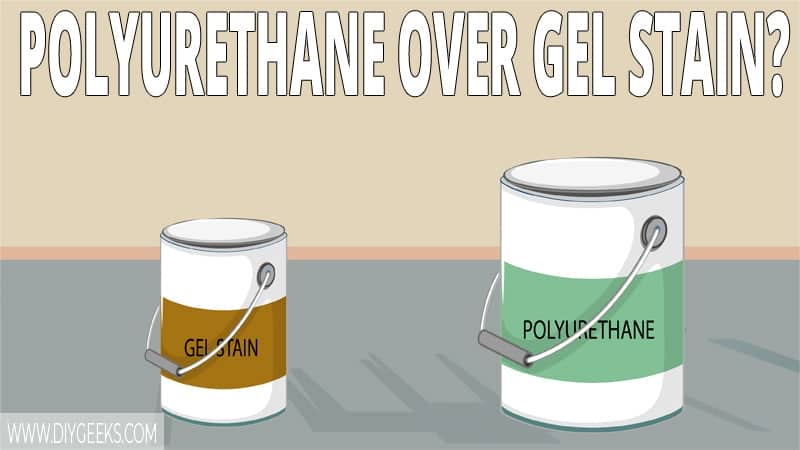Gel stain and polyurethane are both topical finishes that don’t need to penetrate a surface to stick.
You can apply polyurethane over Gel stain as both have similar formulas and are compatible. But, the Gel stain finish must fully dry (cure) for 24 hours before sealing it.
You must clean and sand the Gel stain finish, and thin the polyurethane before applying it.
How Long Must Gel Stain Dry Before Polyurethane?
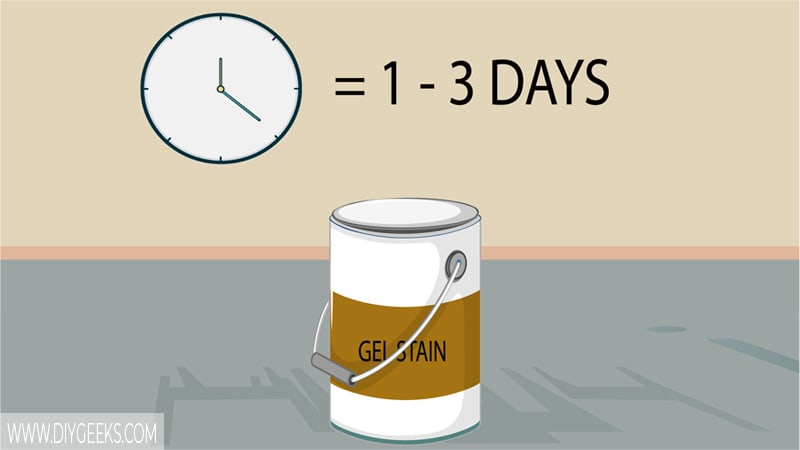
Gel stain must fully dry (cure) for 24 hours before applying polyurethane over it. Gel stain has a slow dry time as it uses oil as its solvent and has a thick flow.
The solvent (oil) must evaporate from the coating for Gel stain to dry. But, the evaporation process of oil is slower and the thick coating of the stain slows the process even more.
For Gel stain to cure, the solvent must fully evaporate and the particles must be hard and compact. The slower the finish dries, the more time the particles have to harden and become more durable. So, the slower the dry time, the stronger the finish.
If you seal the finish too soon it will turn sticky because the Gel stain coating won’t be hard enough to support a sealer.
To speed up its drying time, apply thinner coats, and increase the evaporation rate or the air circulation.
What Type of Polyurethane Can You Use Over Gel Stain?
You can use oil-based, exterior, or spray polyurethane over Gel stain because they use oil as their solvent and are compatible.
You can use water-based polyurethane too, but the adhesion won’t be good as they use different solvents (water and oil).
For outdoor Gel stain finishes, use exterior polyurethane as it’s formulated with extra protective additives making its finish more durable.
How To Apply Polyurethane Over Gel Stain?
To apply polyurethane over Gel stain, do the following things.
- Degrease and Clean the Finish.
- Sand the Surface.
- Thin the Polyurethane.
- Apply Polyurethane.
The tools you need for this project are listed below.
- A paint scraper
- A paint shield
- A can of spray polyurethane
- Fine-grit sandpaper
- A bottle of white spirit
- A hairdryer (Optional)
Tip: Prep your workspace by covering walls and floors before sealing it.
1. Degrease and Clean the Finish
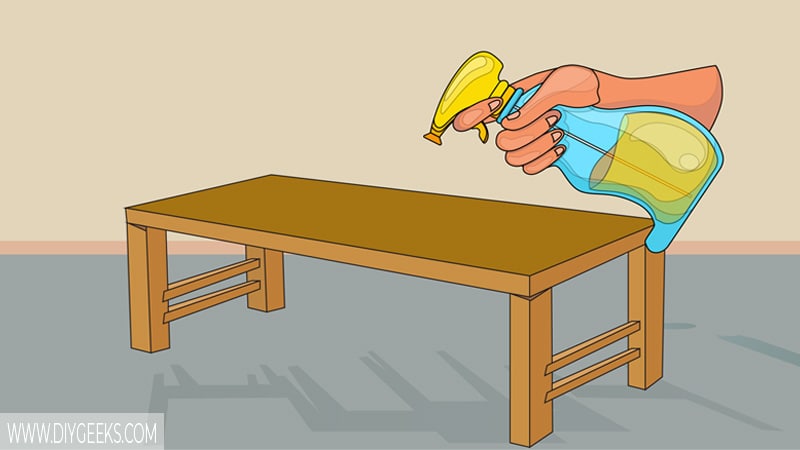
Degrease and clean the Gel stain finish by removing dust and dirt that can prevent good adhesion. The finish won’t dry evenly if you don’t clean it.
To clean the finish do the following things.
- Apply white spirits over the coating to remove the dirt.
- White spirit isn’t strong enough to remove the coating, so it will remove the dirt only.
- Use a soft brush to wipe off the dirt.
- Remove the residue of the white spirit with clean water.
You can use white vinegar or soapy water as an alternative to white spirits.
Note: Don’t use rubbing alcohol (unless diluted) or turpentine to clean the finish, as these solvents are too strong and can remove the entire coating.
2. Sand the Surface
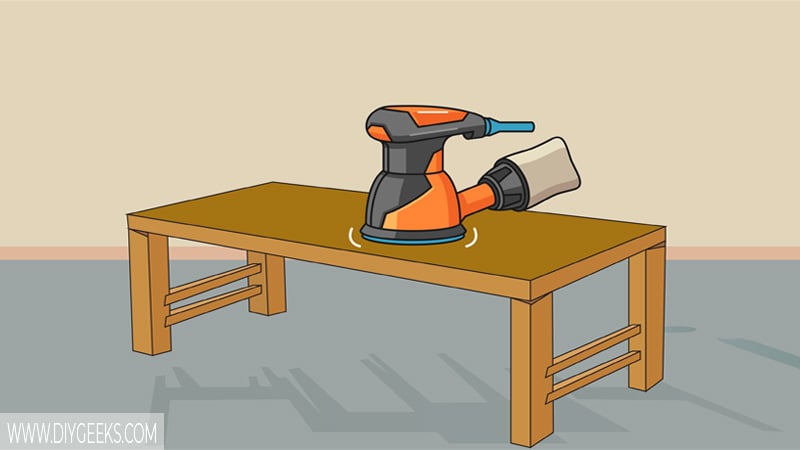
Sand the finish to remove imperfections and the glossy finish so the sealer sticks better.
To sand Gel stain before polyurethane, use 320-grit sandpaper.
3. Thin Polyurethane
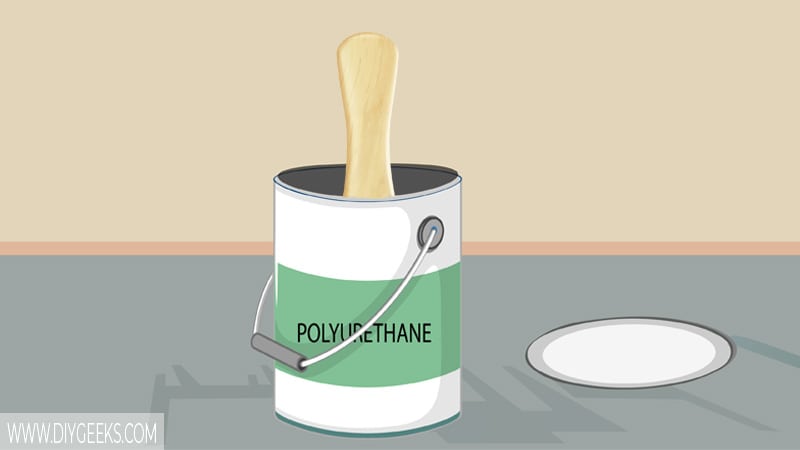
Liquid (or normal) polyurethane has a thick flow so you must thin it before applying it with a sprayer, paintbrush, or roller. Getting an even and smooth finish with a thick coating is harder.
To thin water-based, use water. To thin oil-based polyurethane, use mineral spirits. If you use a spray gun, thin it in a ratio of 4:1 (4 parts polyurethane, 1 part paint thinner). For a paintbrush or roller, thin in a ratio of 3:1.
If you are using spray-on polyurethane, skip this step.
4. Apply Polyurethane
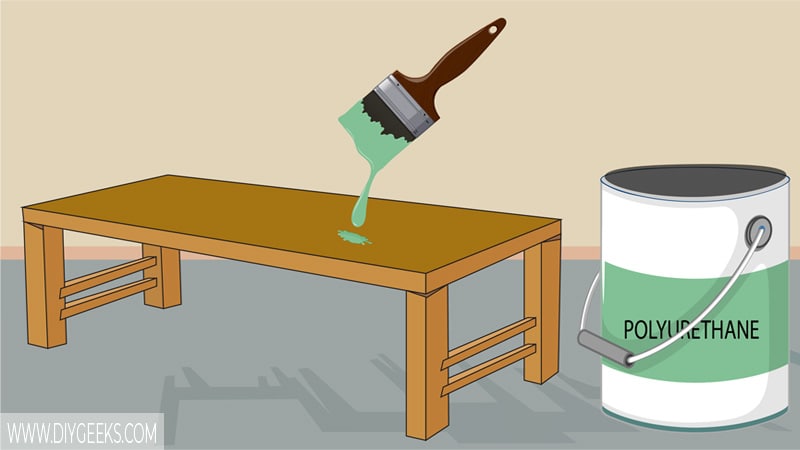
Once the Gel stain coating is cleaned and sanded, apply the thinned polyurethane.
To apply it:
- Use a sprayer, roller, or paintbrush.
- Apply 3 coats of polyurethane.
- Sand between coats with ultra-fine sandpaper. Don’t sand the final coat.
- Remove dust.
- Wait until one coat dries before applying the next one.
- Allow the finish to dry fully (cure) before using it.
Gel Stain vs. Gel Polyurethane
Gel stain has a high level of urethane in its formula. The high amount of urethane makes it durable and water-resistant. Because of its formula (make-up), gel stain is often called gel polyurethane.
Both of these two finishes don’t need to penetrate a surface to stick. Instead, they can stay over the top layer and stick there.
However, gel stain has a softer finish and enhances the color of the wood. On the other hand, polyurethane is a clear coat that doesn’t have a color.
While gel stain is durable enough for indoor surfaces, you must seal it for outdoor surfaces because it isn’t enough to withstand outdoor elements for too long.
Related Read: Can You Apply Polyurethane Over Tacky Stain?
Can You Apply Gel Stain over Polyurethane?
You can apply gel stain over polyurethane because they have a similar formula (make-up), and Gel stain contains a high amount of urethane, so both finishes are compatible.
Gel stain is a topical finish that doesn’t need to penetrate the surface to stick. So, the finish will stick over all surfaces.
You can also mix polyurethane and gel stain to get a durable and colorful finish. The gel stain has paint pigments that deepen the wood color.
